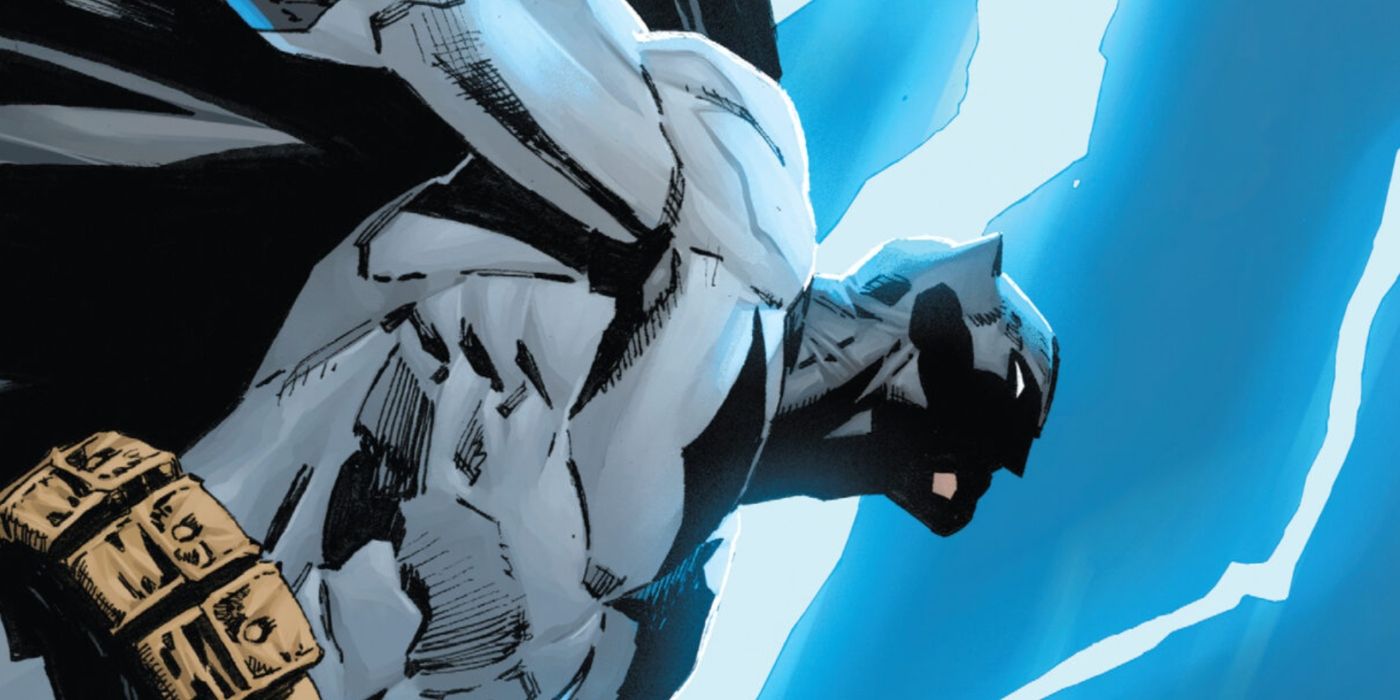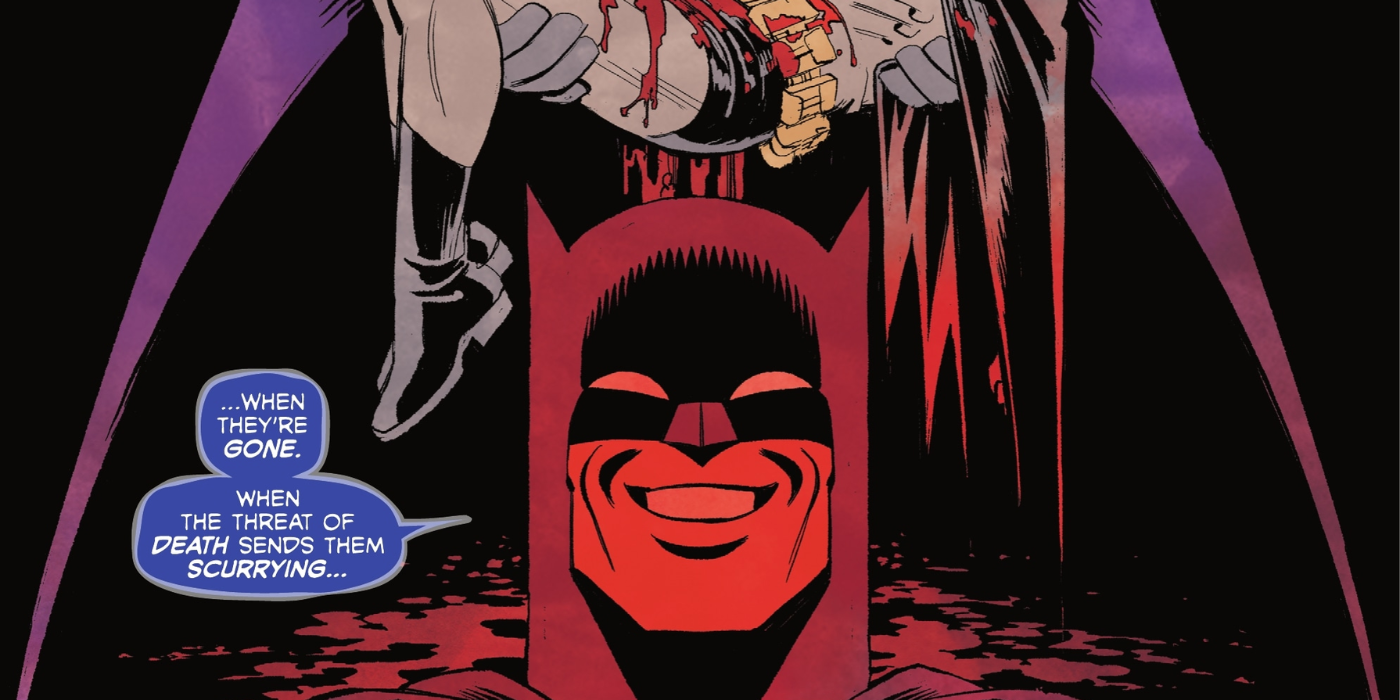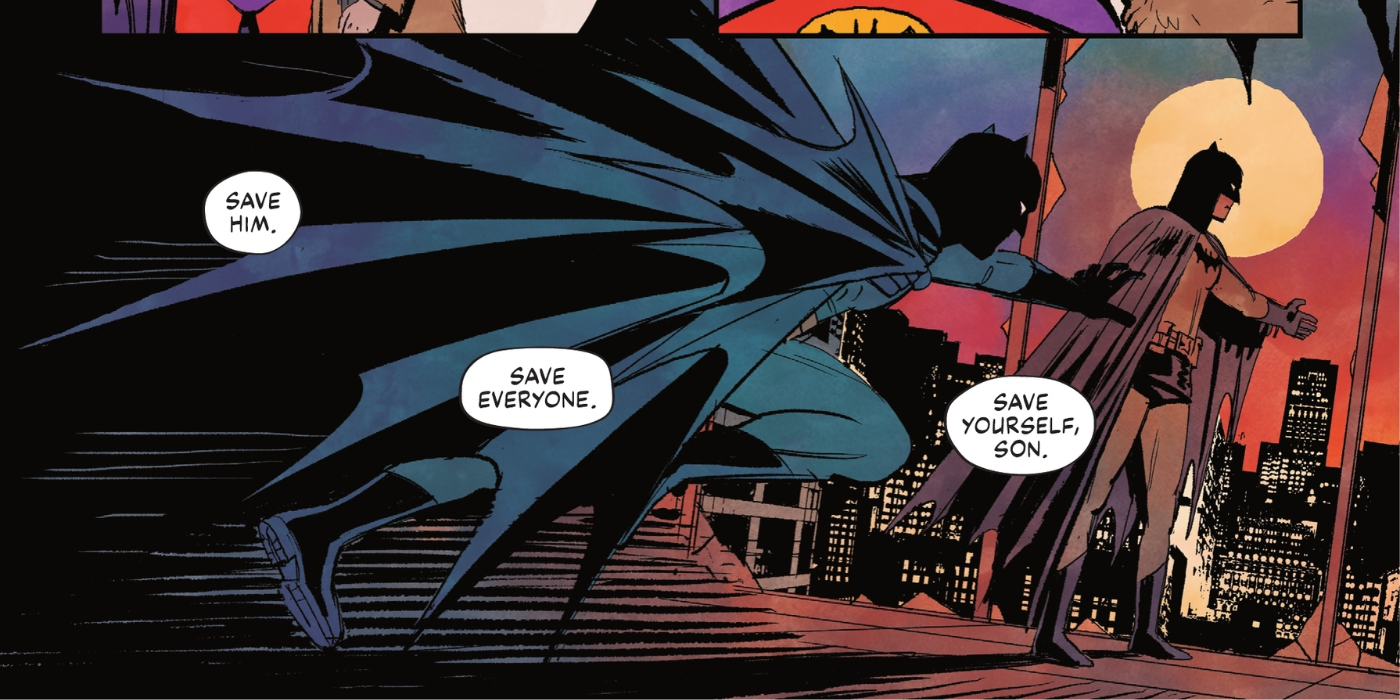The following contains spoilers for the story "I Am A Gun" from Batman #130, now on sale from DC Comics.
While the very earliest incarnation of Batman in the Golden Age had a lethal streak, it wasn't long before the Dark Knight began operating with a stringent no kill rule. It's been at the heart of numerous debates over the years but is often held up as one of Batman's most genuine and noble qualities. His refusal to take a life -- and his efforts to preserve life in all other circumstances -- sits at the heart of some of his most personal conflicts.
But despite the insistence of others that his commitment to such a strict moral code is a dangerous waste of time, Batman has spent decades dedicated to protecting life above all else. "I Am A Gun" (by Chip Zdarsky, Leonardo Romero, Jordie Bellaire, and Clayton Cowles) from Batman #130 highlights the importance of his commitment and why he can never break his code.
Why Batman Ultimately Refuses to Kill the Joker
Picking up from the events of the previous issue, "I Am A Gun" opens with Batman -- without the restraint of Bruce Wayne -- brutally beating Joker. But within his mind, he's debating against the dark impulses. Bruce debates with the Batman of Zur-en-Arrh persona about if even leaving Joker alive is a crime on their part, and if a Batman willing to kill would ever be willing to stop. But it's ultimately Batman's commitment to saving people that gives Bruce control of himself again, just in time to rescue the villain. Two visions present themselves to Bruce, inspiring him further. The first is a vision of the Joker, guilt-ridden and sane, asking if Batman would be able to save him from what he'd become and what the world would do to him.
The other is his mother, reminding Bruce that he was raised to help people -- and that he will always try to save people, no matter what. It separates him from the "hollow anger" of Batman and keeps him a good man. It's a powerful exploration of Batman's motivations -- and even gives a new in-universe reason for Batman incorporating a yellow oval into his costume. As he dons his new costume, Batman tells Robin it's to draw gunfire to his reinforced chest armor. But in his internal notes, Bruce comments that it's a quiet reminder to himself about how close Batman is to a dark and dangerous edge.
Why Batman Must Never Take a Life
Batman's code of conduct as a hero has been deconstructed, mocked, and explored across plenty of mediums -- with the film adaptations of the character having something of a spotty record with his kill count. But in the core comics, Batman's vow to never kill has pushed him against allies and spared monstrous foes. Storylines like Batman: Ego and "Under the Red Hood" explore them extensively, and crossovers like "The Joker War" turn the debate into a central part of the climax. But at the end of the day, Batman can't kill. There's a childish idealism at the heart of Batman as a concept, which has even been addressed in-universe as criticism from the likes of Talia. Bruce is still that child at heart, lashing out at a world that took mom and dad.
But it is their influence that keeps Bruce from becoming something terrifying, highlighting how important his commitment to them remains. It's that relentless drive to live up to that ideal that pushes Batman to such extremes. Without the morals his parents instilled in him, he would be the Batman of Zur-en-Arrh -- someone who's willing to forgo forgiveness and kill untold scores if it means "saving" the most people. Without that inner drive and strength, Batman becomes something different from what he is. This is how Bruce saves himself from his darkest impulses. Going to that dark place would mean no heart to raise Robin, and no new generation to carry on a hopeful dream. Batman not killing is fundamental to him being a hero. It stems directly from his parents and his commitment to their memories.



